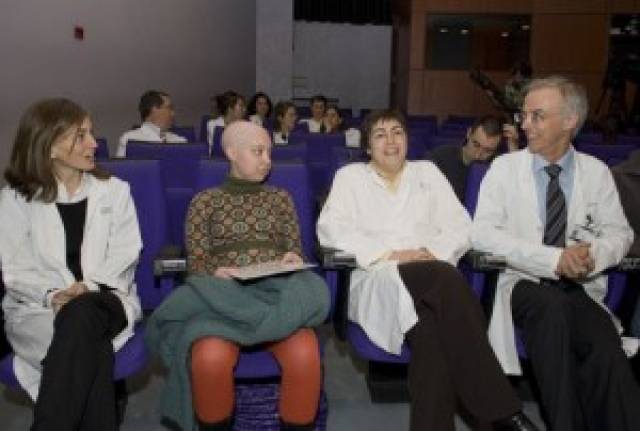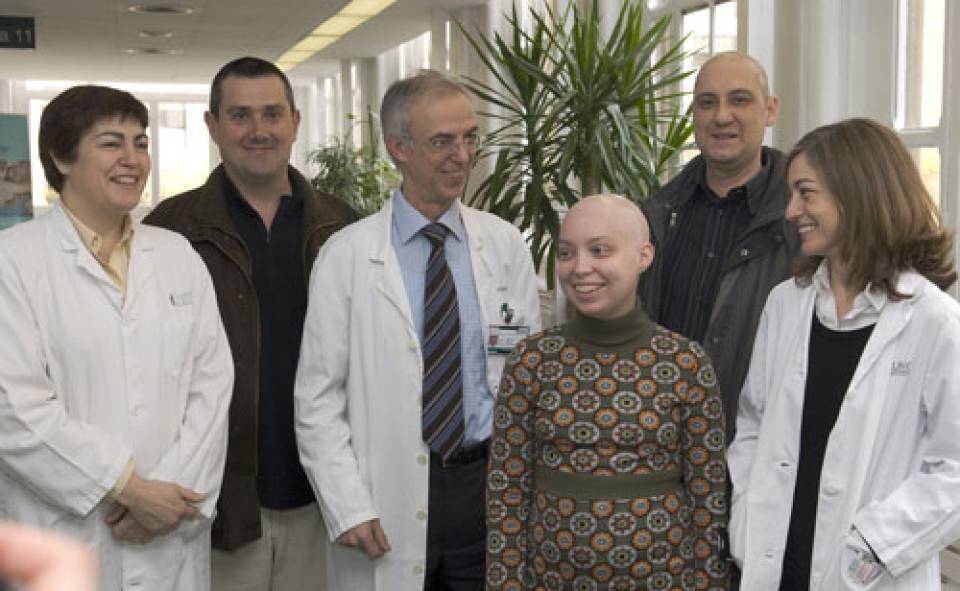Hospital Clínic, Barcelona is one of the few hospitals in the world to apply this new therapeutic option for patients with Crohn's disease, and it does so with the guarantee of success experienced in the US and Italy, where the technique has been tested with excellent results: in an average follow-up period of 6 years, 80% of transplant patients are in a phase of total remission of the disease and the remaining 20% have shown considerable improvement following the transplant, and are now responding favorably to drugs. Dr. Julián Panés and Dr. Elena Ricart over the Gastroenterology Department of Hospital Clínic, Barcelona are the driving force behind this therapy in Spain and began to implement regenerative cellular therapy in patients with Crohn's disease in August 2008. To date, a total of 6 patients are benefiting from this new treatment, of whom 3 I've already completed the process and are in the follow-up face, and a further 3 are at different stages of therapy. The transplant requires several weeks of admission to hospital before patients receive their own cells.
The success of autologous stem-cell transplants in Crohn's disease is possible thanks to the joint collaboration of the gastroenterology and hematology departments and of the hemotherapy and hemostasis department, as the procedure is the same as that carried out in bone-morrow transplants to cure leukemia or myeloma. Thus, when a case is detected, the professionals from the different departments of Hospital Clinic, Barcelona supervise each of the phases of the process to autologous Transplant. In this case, Dr. Panés and Dr. Ricart from the gastroenterology department work together with Dr. Montserrat Rovira from the hematology department of the Catalan hospital and with Dr. Enric Carreras, the head of this department, to provide joint monitoring of the patients. Dr. Pedro Marín of the hemotherapy and hemostasis department of Hospital Clínic, together with Dr. Miquel Lozano, are responsible for guiding the patients through the process of cryopreservation and collection of stem cells before the final transplant.
Cellular Therapy as a Strategy to Combat Crohn's Disease
Crohn's disease, together with ulcerative colitis, is included in what is called irritable bowel disease. It is a chronic genetic disease that occurs when the immune system loses tolerance to the patient's own intestinal flora, leading to an abnormal inflammatory response that continues over time. The results are inflammation and ulceration in different areas of the digestive tract, leading to the symptoms. The disease progresses in the form of unpredictable and variable outbreaks throughout the patient's life and the severity of the symptoms varies according to the level of involvement of the intestines and the patient's response to the assigned treatment. It is a disease that usually affects young people between the ages of 18 and 40 years, and approximately 2000 new cases are diagnosed in Spain every year. Diagnosis is often difficult because it presents symptoms similar to those of other diseases of the digestive tract: abdominal pain, diarrhea, vomiting, nausea, fever, general malaise, etc. Patients' quality of life is conditioned by the severity of the disease and, in the most severe cases, prevents them from leading a normal life, with a very high level of suffering due to the acuteness and frequency of the intestinal symptoms.

In severe cases involving recurrent outbreaks (reactivation of the disease several times throughout the patient's life), Crohn's disease presents several treatment options. Firstly, doctors choose to use corticosteroids and immunosuppressant and biological drugs to control the inflammatory process and prevent complications of the disease such as stenosis (narrowing of the intestinal lumen) or fistulas (openings from the intestinal lumen to other organs, such as the intestine, bladder, vagina, or skin). However, over the course of the disease, as much as 70% of severe patients require surgery to remove segments affected by the disease, due to failure of the pharmacologic approach. The surgery is occasionally very aggressive for the patient, as it is sometimes necessary to remove the entire colon or large sections of the small intestine, thereby considerably affecting the absorption of food by the intestine, with a resulting deterioration in quality of life and body image (colostomy bag). For this reason, new treatments are being developed for patients in whom this solution has not been an option to date.
Autologous Stem-Cell Transplant: Phases of the Procedure
When the case is detected (that does not respond to drugs or surgery), the patient undergoes an autologous stem-cell transplant, which is a bone-morrow transplant in which the immune system is reset to prevent it from attacking the intestinal flora. The process lasts approximately 2 months and consists of 6 phases:
1. Initial Chemotherapy (Cyclophosphamide + G-CSF). In this initial phase, leukopenia or reduction of the number of leukocytes (immune-system cells) in the blood is induced in the patient.
2. Migration of Stem-Cells to the Blood. Following the previous immunosuppression, the organism reacts by releasing stem cells from the bone marrow into the blood; these are the cells which will later be used for the transplant.
3. Collection of Stem Cells by means of Apheresis. Apheresis is a technique that separates components of the blood. Here, the stem cells that previously migrated from the bone marrow are separated.
4. Cryopreservation of Stem Cells. When the stem cells have been collected by apheresis, they are frozen and preserved until ready for transplant.
5. Second Chemotherapy. In this phase, total leukopenia is induced; that is, the immune system is left devoid of leukocytes, ready to be reset with the stem-cell transplant.
6. Autologous Stem-Cell Transplant. The patient receives the transplant by means of transfusion with his or her own stem cells. The immune system is reset, leading to remission or reduction of the abnormal inflammatory process of Crohn's disease.
To see COMB's video: http://www.combtv.cat/home.asp?Vq8=EHM

